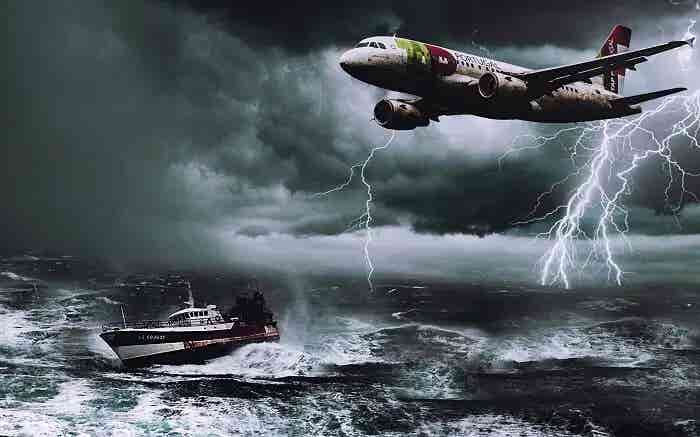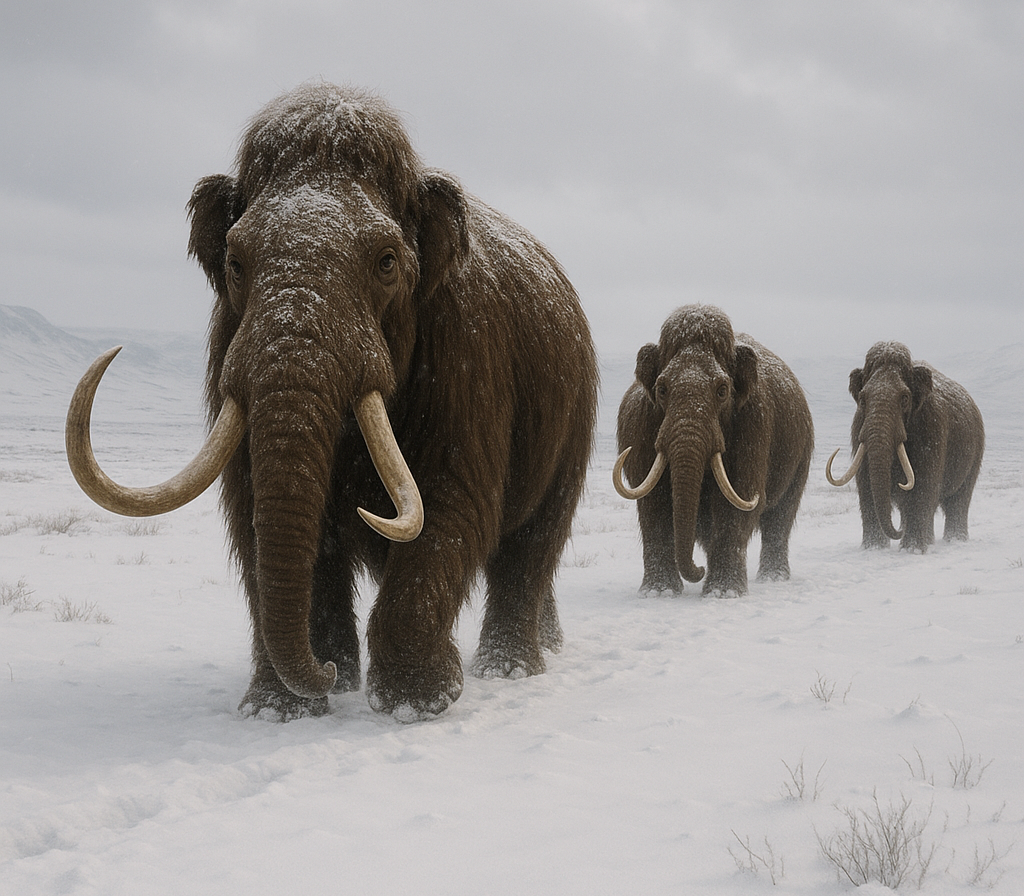Bermuda Triangle myths debunked by experts
Expert analysis shows Bermuda Triangle disappearances match global ocean rates, with weather and human error the real culprits.

More than 50 ships and 20 aircraft have been reported missing here over the past century. (CREDIT: CC BY-SA 4.0)
In December 1945, five U.S. Navy TBM Avenger torpedo bombers lifted off from Fort Lauderdale for a routine training mission. Known as Flight 19, the squadron was expected back in two hours. Instead, the pilots lost radio contact, drifted off course, and vanished without a trace. A PBM-Mariner seaplane sent to find them exploded midair that night, killing its 13 crew members. Witnesses saw the fireball, debris, and oil slick, and the Navy grounded all similar “flying gas tanks” soon after.
For decades, this tragedy has been central to the legend of the Bermuda Triangle, a loosely defined region between Florida, Bermuda, and Puerto Rico. More than 50 ships and 20 aircraft have been reported missing here over the past century. Popular accounts paint the region as a supernatural trap. Books, movies, and TV shows have blamed aliens, underwater cities, time warps, and mysterious energy fields. Yet many scientists—and even insurers—see the story very differently.
Science Over Superstition
Australian science communicator Karl Kruszelnicki has been one of the loudest voices challenging the myth. Since 2017, he has argued that disappearances in the area are no more frequent, proportionally, than anywhere else on the ocean. He cites both the U.S. Coast Guard and Lloyd’s of London, which has kept shipping insurance rates the same for Bermuda Triangle voyages since the 1970s.
“It is close to the Equator, near a wealthy part of the world—America—therefore you have a lot of traffic,” Kruszelnicki told news.com.au. The more ships and planes you have in any location, the more incidents you’ll record, especially in a challenging navigation zone. He notes that the area’s geography, heavy marine traffic, and unstable weather create conditions ripe for accidents. “The number that go missing in the Bermuda Triangle is the same as anywhere in the world on a percentage basis,” he said.
NOAA agrees. In a 2010 statement, the agency wrote: “There is no evidence that mysterious disappearances occur with any greater frequency in the Bermuda Triangle than in any other large, well-traveled area of the ocean.”
The Real Hazards
Environmental factors provide most of the explanation for the incidents. The Gulf Stream, a powerful current moving through the triangle, can rapidly shift weather from calm to violent. Many Atlantic hurricanes pass directly through the area, especially before the advent of modern forecasting. Numerous islands and shallow waters in the Caribbean create navigation hazards. And in rare cases, compass readings here can point to true north instead of magnetic north, causing navigators to drift off course.
Related Stories
- Scientists solve the 75-year-old mystery of massive 'gravity hole' in the Indian Ocean
- The myth of Stonehenge's purpose as an ancient calendar exposed
The U.S. Navy and Coast Guard have repeatedly stated there is no supernatural force at work. Instead, they credit “the combined forces of nature and human fallibility” for maritime losses. The U.S. Board of Geographic Names does not even recognize the Bermuda Triangle as an official location, nor maintain any records of it.
Kruszelnicki’s review of the Flight 19 records points to poor weather and pilot error. Lieutenant Charles Taylor, the squadron leader, was the only experienced pilot in the group. According to Kruszelnicki, Taylor arrived with a hangover, flew without a watch, and had a history of getting lost. He believed his compass was broken and thought he was over the Florida Keys when he was actually near the Bahamas. Radio transcripts reveal that some junior pilots suggested turning west toward land, but Taylor insisted on flying east, deeper into open ocean.
Legends That Linger
The myth’s hold on the public owes much to sensationalist coverage. Vincent Gaddis’ 1964 article The Deadly Bermuda Triangle framed the area as a “triangle of tragedy” with disappearances “beyond the laws of chance.” Charles Berlitz’s 1974 bestseller The Bermuda Triangle sold 20 million copies and connected the legend to unrelated events, such as the Mary Celeste mystery, which happened on the other side of the Atlantic. Hollywood embraced the story, with references in Close Encounters of the Third Kind portraying Flight 19’s crews as alien abductees.
Even when data from Lloyd’s of London showed no anomaly, the narrative endured. The insurance firm stated in 1997 that losses in the triangle matched rates in other oceans and that premiums for crossing it were no higher than average.
Theories With a Scientific Twist
Some explanations mix science with speculation. One theory points to methane gas trapped in frozen hydrates on the seabed. If released suddenly, the gas could create a frothy, low-density patch of water, causing ships to sink. The methane could also ignite if it rose into an aircraft engine. While scientists confirm such gas releases can happen, the last major one in the region likely occurred over 15,000 years ago—long before modern ships or planes existed.
Other theories invoke magnetic anomalies, rogue waves, or massive undersea landslides. But none have been proven to cause disappearances at a higher rate in this part of the Atlantic.
What remains is a blend of fact and fiction. The Bermuda Triangle’s true danger lies in its busy sea lanes, unpredictable storms, and navigational challenges. For sailors and pilots, those risks are real enough—without invoking alien abductions or ancient fire-crystals from Atlantis.
Further Research into the Bermuda Triangle
In October 2024, Chigozi Eke published the article “Bermuda Triangle Mystery: Unraveling the Enigmatic Aura through the Lens of Media Technological Determinism Theory” in the Advance Journal of Linguistics and Mass Communication. The study uses Media Technological Determinism Theory—originally proposed by Marshall McLuhan—to explore how the evolution of media has shaped and sustained the myth of the Bermuda Triangle.
The author employed a library research method, systematically reviewing both primary media sources (news reports, documentaries) and secondary analyses. This approach uncovered how media technologies—from print and radio to digital and social platforms—have played active roles in constructing the region’s mysterious reputation.
Eke found that media coverage consistently transformed unrelated incidents into a cohesive, sensational narrative. Dramatic storytelling, selective reporting, and a focus on speculative theories have overshadowed scientific explanations. This shaping of narrative shows how the medium itself, not just the content, has influenced public perception over decades.
The study also highlighted how media convergence—the blending of traditional and digital platforms—has amplified this effect. A single story can migrate across television, social media, blogs, and memes, blurring lines between fact and fiction, and reinforcing the aura of mystery.
Furthermore, while scientists and skeptics have offered evidence‑based debunking, their voices receive less media attention. Sensational narratives dominate, especially in digital algorithms that prioritize engagement over accuracy, thus skewing public understanding.
Note: The article above provided above by The Brighter Side of News.
Like these kind of feel good stories? Get The Brighter Side of News' newsletter.



